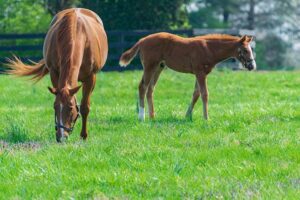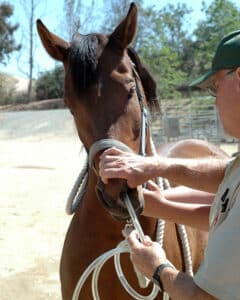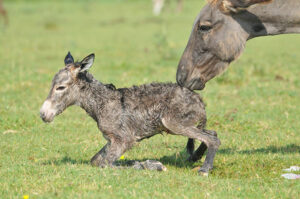
Breeding Mares Early in Life Might Lead to Early Fertility Decline
Study: A broodmare’s fertility appears to decrease slowly over the years, on a downhill slope that follows her number of breeding years, and not just her age.


Study: A broodmare’s fertility appears to decrease slowly over the years, on a downhill slope that follows her number of breeding years, and not just her age.

We’ve compiled a science-based list of nonriding activities to help keep you and your horse busy during these cold winter months.

To better understand the piaffe and its effects on a horse’s biomechanics, researchers investigate the ground reaction forces of elite dressage horses performing the movement over pressure plates.

An Italian researcher outlines the stresses high-performance horses face during transport and what horse owners and managers can do to help.

Researchers found horses on regular four- to six-week trim and shoe cycles didn’t have significant gait changes after their hoof care appointments, even on a finely measured level.

Electrical impedance tomography could be simple enough for veterinarians to use in the field to diagnose asthmatic horses without anesthetics or an assistant.

Is horseback riding really exercise? Here’s what researchers have to say.

To understand how horses fared during standing flank laparotomy for colic, researchers reviewed records from 37 equids. Here’s what they found.

The large volumes of water pumped into the stomachs of horses with impaction colic can sometimes do more harm than good, according to Italian researchers.

A green energy source might one day come from the big brown pile behind your barn.

You expect dusty hay to set off inflammation in asthmatic horses’ lungs. But did you know dusty hay and indoor housing can also affect their gut microbiota?

Researcher: Horses only start to crib, weave, or perform other stereotypies in one kind of context: when their environment is suboptimal.

Study: Horses’ arteries grow thicker and harden with age, making them more prone to rupture.

A 10-day-old foal in Switzerland became the world’s first horse to undergo successful balloon valvuloplasty to correct a faulty pulmonary artery valve.

While successful embryo transfer in donkeys is rare, a new technique created by Brazilian researchers resulted in two surrogate jennies giving birth to healthy donkey foals.
An equine surgeon has developed a successful method for gelding cryptorchids by accessing and removing the retained testicle through the navel.
Stay on top of the most recent Horse Health news with